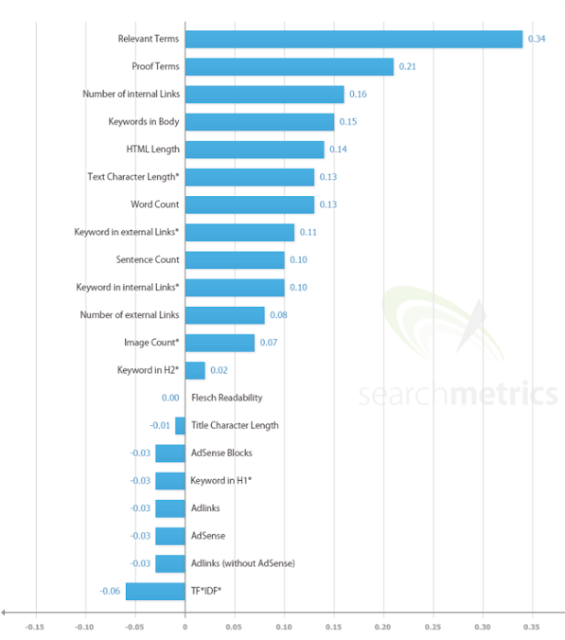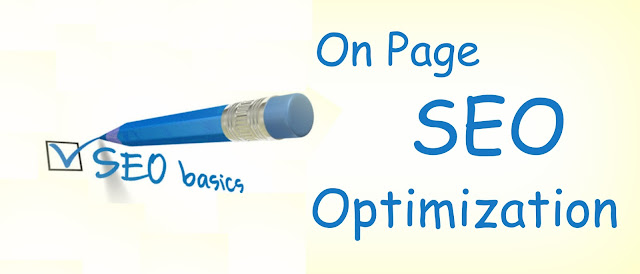we use two main factors to optimize a website or blog posts that is Onpage optimization and Offpage optimization. This article focused only On page optimization and I will be sharing some good on page SEO techniques you should implement while working on onpage aspects of your blog posts.
Why we need to do OnPage Optimization:
On-page and off-page optimization go hand in hand to reach the success. Even though you struggle optimizing your website externally (gathering backlinks, mentions and building popularity), your results will not be the same without on-page SEO.
On-page factors is plays a very important role. It helps make the off-page efforts easy. For example, without optimizing on-page, it becomes increasing difficult to rank for the keywords that you are trying to be found for.
Below image are shown latest 2015 On-page search engine factors :
 |
seo strategy template
|
Let’s take a look at some on-page SEO tips that can help you leap over the competition in a Google search.
1. Blog Post Title
Most important On page factor which really plays a big role .We should make sure we are using targeted keywords or phrase towards the beginning of Title tag. We should not repeat the same keyword in title tag with the intention to get better rankings on Google,Yahoo and Bing. And we should keep limit Title Characters length to 65 Characters only with spaces.
2. META Description Tag
META description is a vital part of any on-page SEO techniques and it is extremely important to use it properly. In short, a META description tag describes the content on your page both for search engines and for searchers. Most search engines accept description tags under 160 characters, the rest will not be visible for searchers. Therefore, you want to limit your description to this amount of characters. Including keywords in your description is definitely a must thing to do, but try not to overdo it. Generally, repeating keywords once and including similar keywords is enough. Try to consider your description tag as your copy, as your search traffic CTR will greatly depend on it.
3. Optimize Your Site Page Around Targeted keyword's
The days of keyword “stuffing” are over, but you still need to keep your site pages optimized around one central idea and keyword. Keywords should appear in important on-page elements like the page title, heading, image alt text, and naturally throughout the page copy, but you should still be sure to craft each of these items for humans, not search engines
4. Site URL Structure
A URL is one of the first things a search engine uses to determine page rank, which is why it is really important to make your URLs easy to crawl. You can do this by keeping URLs short (this is also beneficial for UX), aligning to the page’s topic and keyword, and ensuring that URLs help you to categorize your site pages.
5. Keyword Density
You should keep the keyword density to up to 1.5% percent with mix of LSI keywords. You should be using your main keyword once in first paragraph and then in the last paragraph apart from regular use in blog post content. You should use bold, italic and underline to highlight important keywords and phrases in your blog post. Here is official Matt Cutts comment on what’s the idle Keyword density:
6. Use Proper Heading Tags
Heading tags should clearly tell the reader and search engines about the page’s topic. A search engine is able to identify the heading when it is tagged by bracketing text in <H1> within the page’s HTML (Note: If you have a CMS or COS like HubSpot or WordPress, this is usually coded in the background). Heading tags help tell a search engine the level of importance of the content by also using <H2> and <H3> tags. You can check your site’s current heading tags by viewing in HTML view.
7. Optimize Image Alt Text
While you should not hide your heading tag in an image, you should still give search engines more opportunities to link to your website by adding keywords in the image alt text and file name.
8. Word Count Per Post
I don’t see blog posts doing well especially on search engine front page having very few words. So as standard, you should try to draft blog posts carrying minimum 700 words. If possible write long and well researched blog posts while targeting highly competitive keywords in your niche. More over, if you writing naturally and covering everything related to the topic, your topic would be of great length. Suggestion: Analyze other posts on the target keyword and see what you are missing and if your post is better than post ranking on first page in Google or not. Though, there is no limit or exact number for minimum word count for SEO optimized posts, but ideally I keep it more than 700 words. This post is over 1900 words plus.
9. Content Interlinking
You should link out to related blog posts from your blog to send additional page rank and traffic to them. Interlinking of blog posts naturally will help your blog readers spend more time on your blog. But you should not overdo it. While linking out to your own blog pages, you should use keyword rich anchor text as that will help the linking posts perform better on Google and other search engines for their targeted anchor texts. Also, keep variation while internal linking but don’t confuse Google with two similar post for same target Keyword.
Google continues to use natural, quality inbound links as a main ranking factor. In 2015, you should closely monitor inbound links to ensure that they are constantly growing and that the inbound links come from quality websites.
11. Increase Site Speed
Since 2011, Google has made it apparent that site speed matter in search rankings, and today, with a bigger emphasis on the user experience than ever before, site speed will continue to be a critical ranking factor. Users don’t like to wait, and we are becoming more and more accustomed to the fast load times, which means your site will be left in the dust when a user must wait. There are a few important things you can do to speed up site speed:
Test site speed using Google or a built-in CMS tool like utilized in HubSpot
Ensure your web server can handle you size of your company and website needs. Overloaded web servers can slow down load times.
You may also find that one of the following culprits is slowing down times:
- Embedded videos or media
- Using a lot of images
- Images that are not compressed to minimize pixels before uploading
- Clunky coding
- Using a lot of plugins
If you suspect any of the above are causing slow load times, you can find experts to help clean up your site or minimize the use of each.
12. HTTP vs. HTTPS: Why They Matter
With a big push to make the web world more secure, Google has began emphasizing the importance of utilizing HTTPS. While many websites have traditionally ran on a Hyper Text Transfer Protocal (HTTP), a Hyper Transfor Protocal Secure (HTTPS) ensures that a website is encrypted and cannot be hacked. With Google beginning to test the waters in using HTTPS as a ranking factor, it will be important to secure your website with HTTPS in 2015.
13. Mobile Search Implications
With nearly 40% of organic traffic coming from mobile devices in 2014, it should come as no surprise that mobile-friendly websites will rank better with Google. To ensure you are mobile optimized, you should be avoiding common mistakes described by Google including faulty redirects, mobile-only 404s, blocked media, and slow mobile load times.
Although it may feel like Google is trying to make our jobs as inbound marketers more difficult, they ultimately want to provide the best user experience, which should be the goal of your website as well. If you’d like to discover how you could better optimize your website in 2015, request a marketing assessment from SmartBug Media today.
Search engine optimization starter guide
Start learn from google guide Click here for get pdf Moz beginners SEO guide Click here to go
Kissmetrics seo guide visit here



Post a Comment
thank you ! for interest .... please comment only about topic don't post spam ,we hate spammers and spamming comment's are does not approved.